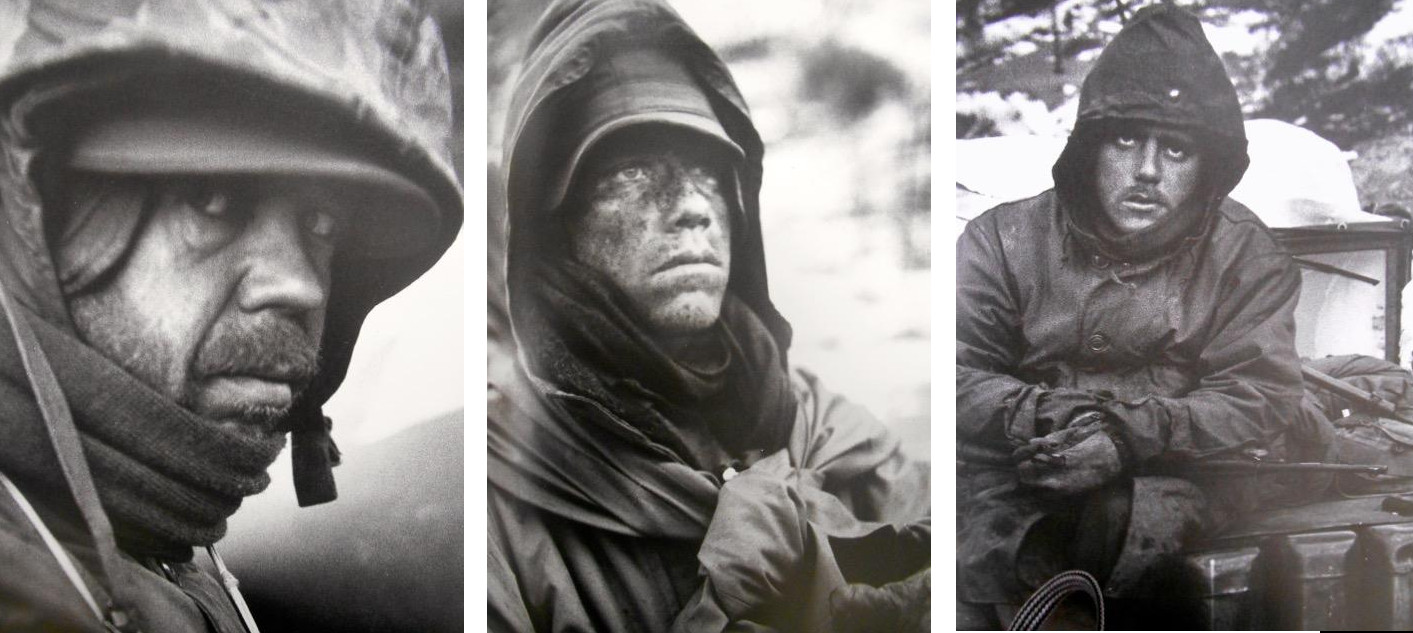Remembering Chosin
By Ned Forney
October 26, 2017
It’s a pivotal event of the 20th century. An experience so monumental that it has come to represent, even encapsulate, the ongoing struggle between the forces of oppression, tyranny, and authoritarianism and those who believe in freedom, justice, and democracy. The Chosin Campaign, correctly called “Changjin” in Korea, was a defining moment in history.
The two-week long battle (November 27-December 11, 1950), pitting approximately 30,000 US, ROK, and British troops against 120,000 Chinese soldiers, occurred in the worst of conditions: excruciatingly cold weather, brutal terrain, and deadly isolation. The snow, ice, wind, and below-zero temperatures, combined with towering mountains, plunging cliffs, and treacherous roads, were perfect for a Himalayan mountain-climbing movie set. Not a battlefield.
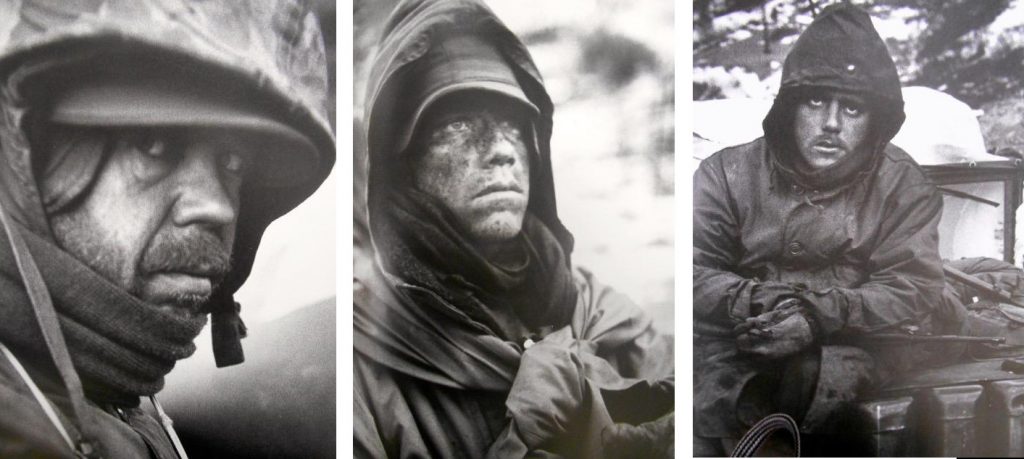
Photos above by David Douglas Duncan, Life Magazine
All other photos by Ned Forney
The conditions at Changjin were so bad that Oliver P. Smith, the commanding general of 1st Marine Division — the largest unit at the Reservoir and the one that did the most fighting — said it was “never intended for military operations.” Anyone who fought there would agree. But the Chinese were the real enemy. The disciplined, courageous, and seemingly tireless Chinese soldiers were everywhere. The 1st Marine Division, surrounded and vastly outnumbered, was in one of the most precarious and potentially disastrous predicaments of any unit in Marine Corps history, arguably in American history.
Through herculean efforts, exceptional war-fighting skills, and countless acts of valor, the Marines broke out of the trap and made their way to Hungnam, a North Korean port on the East Sea. By the end of December 1950, 105,000 servicemen and 100,000 North Korean refugees had been evacuated in one of America’s largest sea-bo of America’s largest sea-borne withdrawals. Mao’s boast that the 1st Marine Division would be annihilated in “only a matter of time” had backfired. It was therne withdrawals. Mao’s boast that the 1st Marine Division would be annihilated in “only a matter of time” had backfired. It was the last time the Chinese leader would ever threaten to obliterate a US Marine unit.
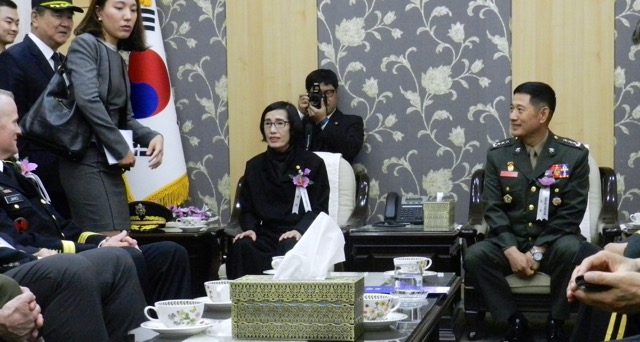
Seated: Minister Pi Woo-jin, Ministry of Patriots and Veterans Affairs, with Republic of Korea Marine Corps Commandant Lee Sang-hoon
On October 25, I was privileged to participate in an event honoring the brave men who fought at Changjin. The ceremony, held at Seoul National Cemetery, was a moving tribute to the Marines, soldiers, airmen, and sailors who suffered, sacrificed, and died in the remote mountains of North Korea. Pi Woo-jin, the ROK’s Minister of Patriots and Veterans Affairs (comparable to the US Veterans Administration) attended the ceremony, and on behalf of ROK President Moon Jae-in, thanked the Changjin veterans for their sacrifices. President Moon has a personal connection to the campaign. His parents were North Korean refugees and were rescued during the Hungnam Evacuation.
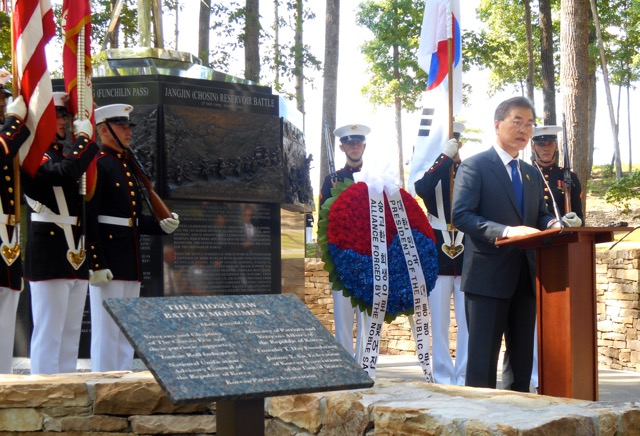
President Moon Jae-in, Republic of Korea, speaking at the Chosin (Changjin) Memorial
in Quantico, VA this past summer
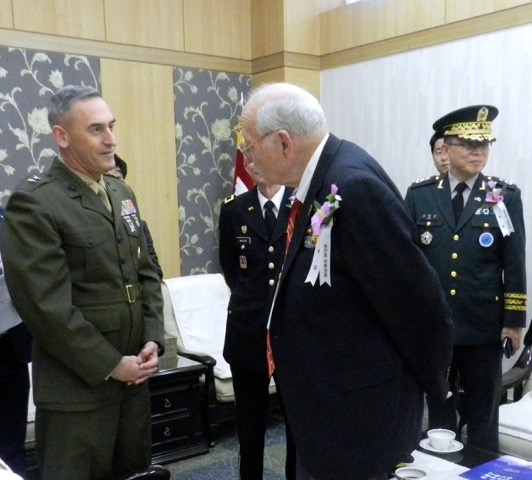
Major General James W. Lukeman, Commander of U.S. Marine Corps Forces Korea,
With Chosin veteran and Chosin Few President Jean White
I also heard Major General James W. Lukeman, Commander of US Marine Corps Forces Korea, give a heartfelt and powerful address on the Changjin Battle’s significance to the Republic of Korea, the United States, and the US Marine Corps. Echoing the words of President Moon in his speech this summer at The National Museum of the Marine Corps, Gen. Lukeman reminded the nearly 10,000 attendees that without the sacrifices made at Changjin and Hungnam, the lives of 100,000 refugees — and South Korea’s freedom — would have almost certainly been lost.
Especially memorable for me was the recognition given to my grandfather, Colonel Edward H. Forney, USMC, the evacuation control officer at Hungnam. Col. Forney was recognized for the part he played in rescuing the refugees, and I was honored to represent our family at the event.
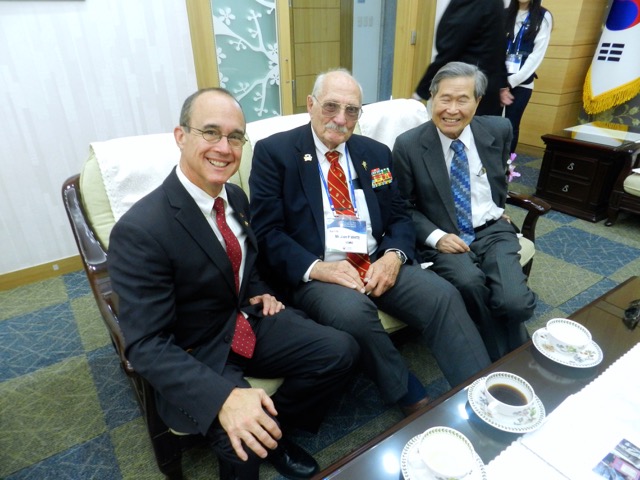
L to R: author Ned Forney, Chosin veteran Jean White, and Chosin veteran John Y. Lee,
who is also KWMF’s Advisor in Korea
I’m thankful for the MPVA and the Korea Military Merit Awardees Association (KMMAA) for organizing the ceremony and for Mr. John Lee, a Changjin veteran and interpreter for 1st Marine Division, for inviting me. Looking back on the afternoon, I feel privileged to have been part of the special occasion. From Lee Gyeong-pil’s (“Kimchi 5”) emotional letter of appreciation to those who participated in the Changjin Battle and Hungnam Evacuation, to talking with Mr. Jean White, a US Marine Changjin veteran and president of the Chosin Few, the observance was an outstanding tribute to truly outstanding men.
Semper Fi!
Ned Forney is a Marine veteran and career educator. He currently lives in Seoul, South Korea, where he is writing a book on the Chosin Reservoir Campaign and Hungnam Evacuation. He can be reached at ned.forney1985@gmail.com or his website, nedforney.com.

